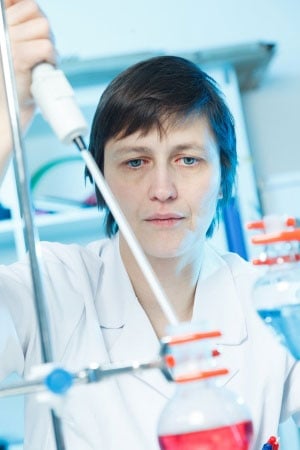 We've all seen the news stories before: a company issues a recall on a processed food product or piece of produce because, after shipment to stores, a contaminant was found.
We've all seen the news stories before: a company issues a recall on a processed food product or piece of produce because, after shipment to stores, a contaminant was found.
These situations are not only serious from a public health perspective— older people, children and people with weakened immune systems being particularly susceptible to bad infections, or even fatality, stemming from the ingestion of contaminated food— they are costly to your business and damaging to your brand, even when no one actually gets sick.
The problem with disease pathogens like E. coli and Listeria, two of the most common food-borne germs, is that the tests which reveal their presence in a batch often so much time to perform (often a matter of days for cultures to grow in the lab) that results are received after the date on which a product must ship in order to be fresh at the market.
Now, new methods of testing are improving those testing times and help to revolutionize food safety.
Space technology for food safety?
When NASA sent its Curiosity rover to Mars, as part of the ongoing effort to determine the origin of the Solar System and to investigate the possibility of life having existed elsewhere, several of the instruments included on the probe were spectrometers.
Spectrometers are instruments that bombard target matter with a stream of tiny electrons. These particles, which have a strong negative electric charge, can excite the component molecules of the targeted matter, breaking them into their component ions and allowing the instrument to determine, using known ionic and atomic masses, what the original matter was composed of.
Now, mass spectrometry is being applied to food safety testing. Australian researchers at the University of Swinburne have developed a spectrometer specifically designed to detect components of the Listeria pathogen in enriched food broths. Whereas prior methods of detection depended on lab cultures or on biochemical analysis that took days, this new method can rapidly detect even low levels of the germ.
The mass spectrometer was able to pick up on the presence of L. monocytogenes— the Listeria variant that causes illness in humans— in chicken pâté, cantaloupe and camembert cheese.
The researchers hope that the technology will be able to detect the germ in other foods, as well. Although they note that the initial capital investment costs in the technology are high— the equipment is expensive to purchase— that cost is mitigated over the long term. The equipment is cheap to run and savings realized by avoiding costly food recalls would more than make up for the initial expenditure.
Bacterial gene-sequencing, on the fly.
As if the promise of mass spectrometry couldn't excite food safety managers and quality control managers enough, another method now being explored is real-time gene-sequencing and identification of Salmonella bacteria in pork.
A PhD candidate at the Technical University of Denmark, Trine Hansen, has developed a new method of concentrating the microbes present when a piece of pork is bathed in water, so that the presence of disease pathogens can be identified in the slaughter line, before they enter the food chain.
Integrated, web-based food safety monitoring.
In the United Kingdom, University of Leicester applied computer science graduate student Sandeep Sharma has worked closely with the European Safety Bureau to develop an integrated catering management system called Navitas which, he hopes, will improve catering safety.
The system uses an easy-to-use software package, remote sensors and handheld devices to allow caterers to monitor the temperature of their food storage sites and of food in transit to distribution points, thus helping to ensure foods are kept within safe temperature tolerances. The system can be integrated with web-connected coolers or heaters to help automatically regulate temperatures, or can be used by a catering manager to remotely monitor and manually intervene to control those temperatures.
The tracking portion of the software suite can also be used to coordinate deliveries or to tag and manage incidents. Additionally, a handheld temperature probe that communicates with the data management system can be used to intermittently check food temperatures on site. During a catered event, for example, data points can be collected and temperature trends tracked, so that the caterer doesn't have to guess when it's time to change out trays or pack it up for the night.
Technological innovation offer real promise for food safety— and for your recipes!
Without quality, pathogen-free ingredients and safe storage and preparation techniques, even your best recipes are worthless. Before your culinary creations ever hit your table, or your customers' plates, you need reassurance that the products you used to create them were safe for consumption.
When you search for wholesale growers and food producers to partner with, make sure you check out their processes and evaluate their food handling and storage techniques. You'll want supply chain partners that adhere to best food safety practices and that integrate the latest, best innovations into their production lines.







